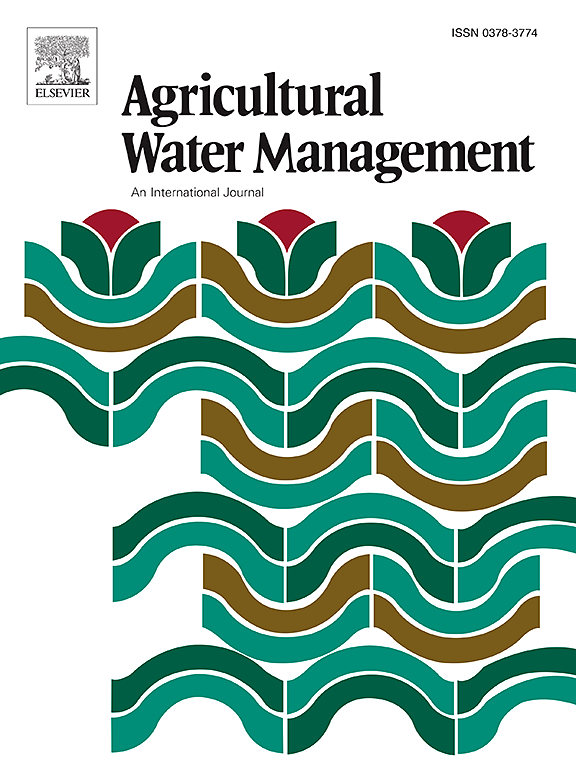Strategies for mitigating winter wheat yield reduction in the Yellow River basin: Simulations and insights from CMIP6 data and the improved DSSAT-CERES-wheat model
IF 6.5
1区 农林科学
Q1 AGRONOMY
引用次数: 0
Abstract
Winter wheat is a vital staple crop in northern China, and climate change is expected to increase the frequency of droughts, leading to reduced yields. Therefore, it is crucial to study the impact of climate change on winter wheat yield and develop strategies to mitigate these effects. This study used CMIP6 data and an improved DSSAT-CERES-Wheat model to simulate winter wheat's phenological stages, yield, and water stress factors in the Middle and upper reaches of Yellow River basin from 2022 to 2050 and proposed measures to counteract yield reduction. The results revealed that optimal sowing dates and irrigation strategies remained stable under both the Shared Socioeconomic Pathway 2–4.5 (SSP2–4.5) and Shared Socioeconomic Pathway 5–8.5 (SSP5–8.5) scenarios across the middle and upper reaches of the Yellow River Basin. Early sowing combined with targeted irrigation during the jointing and grain-filling stages enhanced winter wheat yields but led to delayed phenological development. Moreover, variations in water productivity (WPc) and yield exhibited consistent spatial patterns across the three subregions of the study area. In region 1, the optimal sowing date is 10 days earlier, with a sowing window of 7–13 days earlier. During normal and dry years, irrigation requirements at the jointing and filling stages are 70 mm and 90 mm, respectively. In regions 2 and 3, the optimal sowing date is 15 days earlier, with a sowing window of 12–18 days earlier. Under the SSP2–4.5 and SSP5–8.5 scenarios, the overall growth rates of winter wheat yield in the Middle and upper reaches of Yellow River basin were 20.62 % and 16.32 %, respectively, with irrigation levels of 60 mm and 80 mm at the jointing and filling stages during normal and dry years. This study provides valuable insights and references for developing strategies to mitigate winter wheat yield reduction in the Middle and upper reaches of Yellow River basin under future climate scenarios.
黄河流域冬小麦减产缓解策略:基于CMIP6数据和改进dssat - ceres -小麦模型的模拟与启示
冬小麦是中国北方重要的主要作物,气候变化预计会增加干旱的频率,导致产量下降。因此,研究气候变化对冬小麦产量的影响并制定缓解这些影响的策略至关重要。利用CMIP6数据和改进的DSSAT-CERES-Wheat模型,对2022 - 2050年黄河中上游地区冬小麦物候期、产量和水分胁迫因子进行了模拟,并提出了应对减产的措施。结果表明,黄河中上游地区在共享社会经济路径2-4.5 (SSP2-4.5)和共享社会经济路径5-8.5 (SSP5-8.5)情景下,最优播期和灌溉策略均保持稳定。拔节期和灌浆期早播配合定向灌溉提高了冬小麦产量,但导致物候发育滞后。此外,水生产力和产量的变化在研究区的三个亚区表现出一致的空间格局。区域1最佳播期提前10 d,播期窗口提前7 ~ 13 d。在正常年和干旱年,拔节期和灌浆期的灌溉需水量分别为70 mm和90 mm。2区和3区最佳播期提前15 d,播窗提前12 ~ 18 d。在SSP2-4.5和SSP5-8.5方案下,黄河中上游地区冬小麦产量总体增长率分别为20.62 %和16.32 %,拔节期和灌浆期灌溉量分别为60 mm和80 mm。该研究为未来气候情景下黄河中上游地区冬小麦减产对策的制定提供了有价值的见解和参考。
本文章由计算机程序翻译,如有差异,请以英文原文为准。
求助全文
约1分钟内获得全文
求助全文
来源期刊

Agricultural Water Management
农林科学-农艺学
CiteScore
12.10
自引率
14.90%
发文量
648
审稿时长
4.9 months
期刊介绍:
Agricultural Water Management publishes papers of international significance relating to the science, economics, and policy of agricultural water management. In all cases, manuscripts must address implications and provide insight regarding agricultural water management.
 求助内容:
求助内容: 应助结果提醒方式:
应助结果提醒方式:


